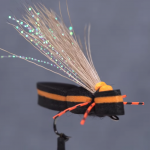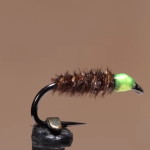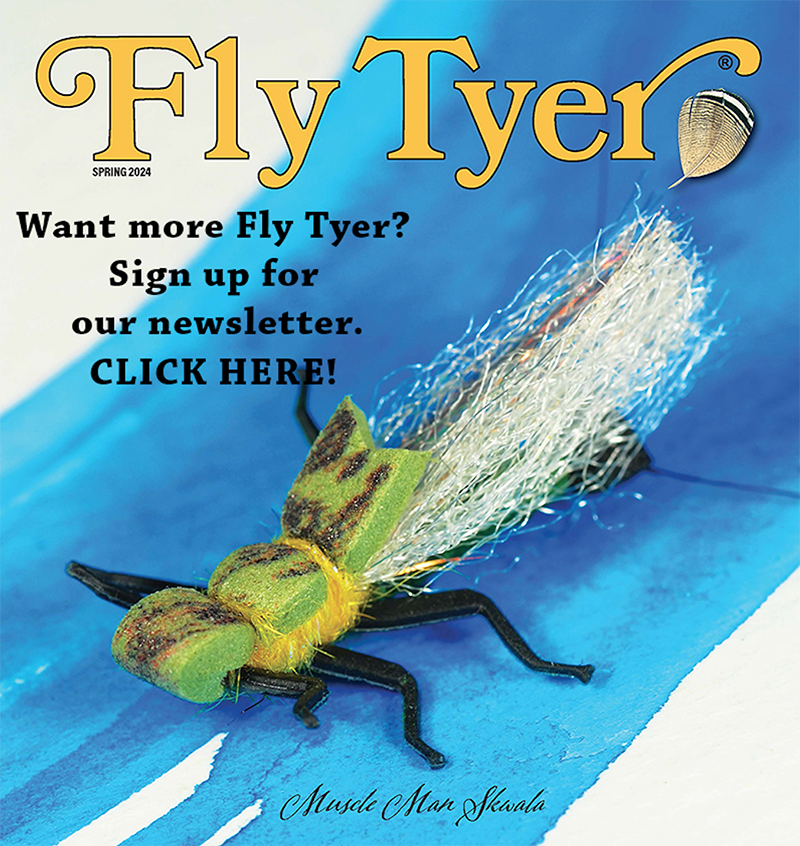How to tie a terrific parasol-style emerger.
by Barry Orde Clarke
This is an alternative method to tying the traditional parachute-style pattern. Deer hair replaces the hackle of a normal parachute. I make the post using deer hair as well, which enables the abdomen and thorax of the fly to sit deep in the surface film in a realistic manner while in a fish’s feeding window.
There are many different techniques for tying parachute hackles, as well as special gallows tools that enable you to keep both hands free for tying. This is probably the easiest technique that requires no special tools, and you can apply it to most traditional types of dry flies and emergers.
The results will differ with the type of deer hair you use. I have had good but very different results with both early-season and late-season hair. The early-season hair is a summer coat, fine and stiff, and creates a traditional-looking hackle. Late-season hair, which is the winter coat, has much more body and volume than the summer coat, and it flares more, too; the result can resemble a paraloop hackle unless the hair is pressed down and glued into place. Winter hair also contains more natural oils than early-season coat and has a tendency not to adhere to glue, but if you use deer hair purchased from a fly shop, it has been washed and tanned, typically resolving this issue.
Unlike deer hair, moose mane hair does not benefit from being tanned and washed. In fact, its natural fats and oils make the hair exceedingly flexible and durable, qualities lost when the hair is stripped and processed. Shop-bought moose mane that has been washed and tanned can become dry and very brittle, and breaks when wrapped or stretched.
If you hunt or know a moose hunter, try to get ahold of a patch of skin from the back of the neck of a bull. Mane hair is not from the beard that hangs on the front of the neck, and the longest hair is found on the back of the upper neck. Being an elk hunter, I have access to a huge amount of select material each autumn, but I take only small patches of the best and most useful hair for tying. This hair is remarkably strong and when pulled between the fingers, practically unbreakable.
FENDER
HOOK: Mustad C49S, size to match the natural.
THREAD: Dyneema (gel spun)
ABDOMEN: Moose mane hair coated with Bug Bond UV resin or a substitute adhesive.
HACKLE: Deer hair and Bug Bond UV
THORAX: Two strands of peacock herl
Starting the Fender
On the Water
The types of rises I see on the water give me a good indication whether the trout are keying on emergers or duns. With emergers, the fish usually move slowly and suck in water under the target repeatedly, or they push the surface film into a small mound without actually breaking the surface. When the trout are rising to duns, the take’s more enthusiastic, slashy, and splashy. When rises are sparse or the fish are playing hard to get, try an emerger. You can also search pocket water or fish dead-drift with an emerger and appropriate single nymph as a dropper.
The ribbed-moose-mane (quill body) tying technique I am showing you is fairly old, but I have revitalized the method with the help of UV resin. We all know that the floating qualities of deer hair are hard to match, but it’s still worth giving this pattern a coat of floatant for extra buoyancy. This quick and simple parachute technique requires only deer hair and UV resin or a substitute adhesive.
Finishing the Fender
Barry Clarke is a regular contributor to our magazine. In addition to being an amazing tier, he is also a professional photographer. Barry lives in Norway.









